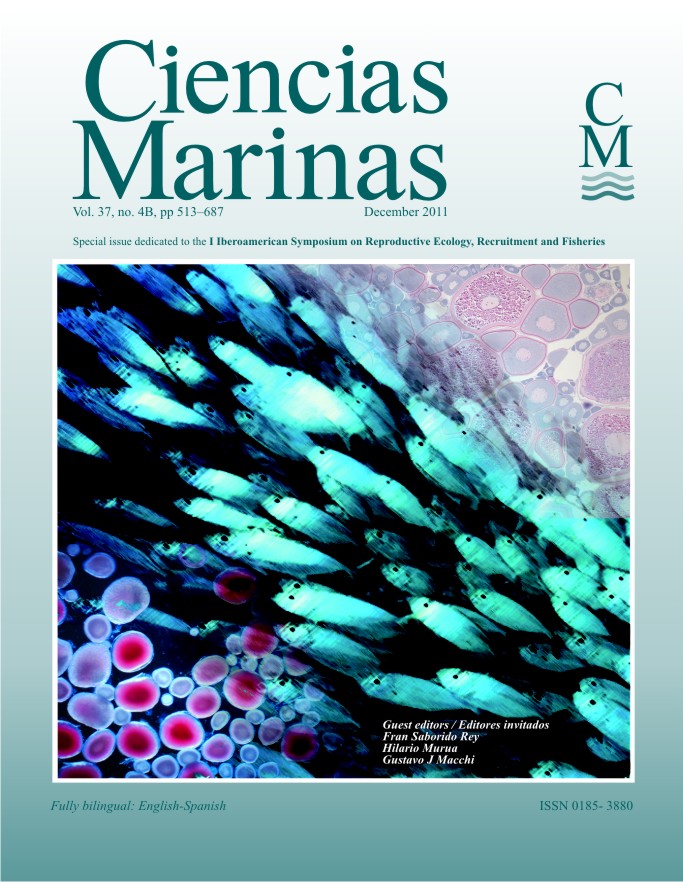Modeling and analysis of the recruitment of Peruvian anchovy (Engraulis ringens) between 1961 and 2009
Main Article Content
Abstract
The principal objective of this work is to present a new model for the assessment of recruitment of the northern-central stock of Peruvian anchovy (Engraulis ringens), and use it to estimate monthly time series of recruits and pre-recruits between 1961 and 2009. The model is length-based and has monthly temporal resolution, allowing the variability in abundance and seasonality of recruitment to be modeled based on fishery and scientific survey information. The anchovy population is modeled with two recruitments per year, parameterizing recruitment using abundance, mean length, and dispersion of the mean length at recruitment. This way of modeling recruitment enables a better representation of the temporal continuity of the recruitment process in comparison to an approach that only considers the abundance of recruits. The monthly time series of pre-recruits (4.0–7.5 cm) and recruits (8.0–11.5 cm) obtained were analyzed, and two regime shifts in recruitment dynamics (1971 and 1991) were identified. Seasonal patterns given by the model are consistent with those obtained by independent direct studies. We discuss the advantages and limitations of this approach within the framework of the study of the recruitment process and the integration of reproductive data in stock assessment models.
Downloads
Article Details
This is an open access article distributed under a Creative Commons Attribution 4.0 License, which allows you to share and adapt the work, as long as you give appropriate credit to the original author(s) and the source, provide a link to the Creative Commons license, and indicate if changes were made. Figures, tables and other elements in the article are included in the article’s CC BY 4.0 license, unless otherwise indicated. The journal title is protected by copyrights and not subject to this license. Full license deed can be viewed here.

